#ivan carvalho icons
Explore tagged Tumblr posts
Text




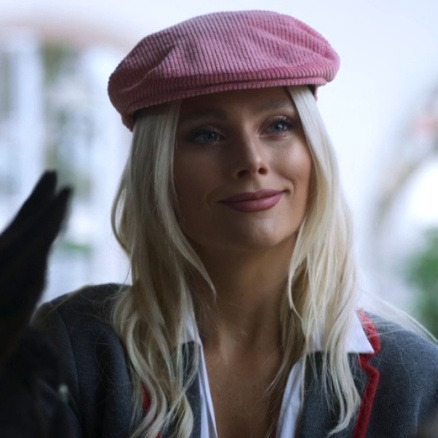



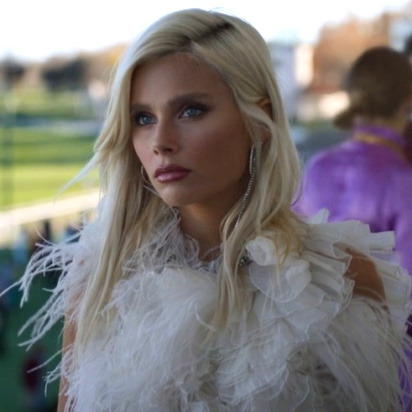
like or reblog if you save. ♡
#icons#icons request#elite#netflix elite#elite cast#elite season 7#elite s7#elite icons#valentina zenere#isadora artinan#andre lamoglia#ivan carvalho#mirela balic#chloe elite#fernando lindez#anitta#netflix#tv show#tv series
100 notes
·
View notes
Text



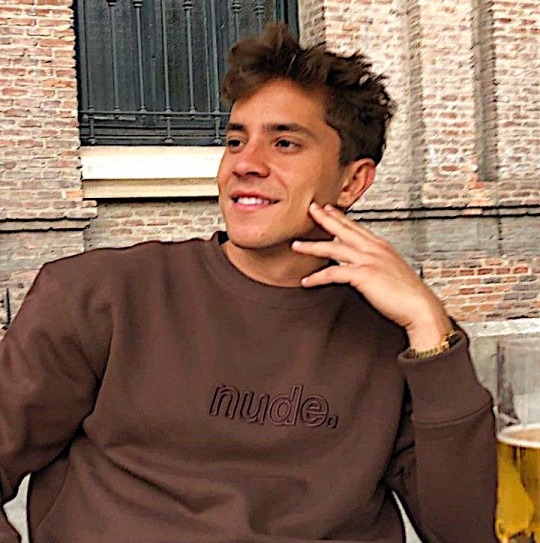



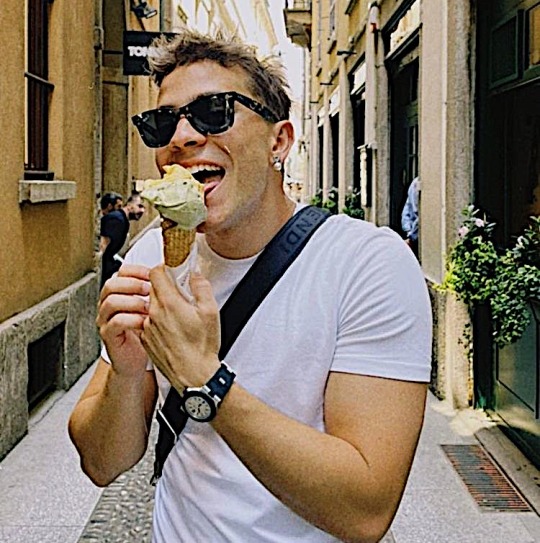

andre lamoglia icons
28 notes
·
View notes
Text
Patrick & Iván





like or reblog if you use or save.
#serie tv#elite#elite icons#elite 6#ivan carvalho icons#ivan carvalho#patrick blanco icons#patrick blanco commerford#patrick blanco#manu rios icons#manu rios#Patrick y Iván
82 notes
·
View notes
Text

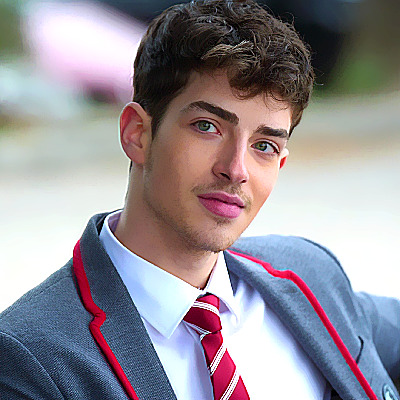







#patrick blanco icons#manu rios icons#isadora artinan icons#valentina zenere icons#andre lamoglia icons#ivan carvalho icons#elite#elite icons#netflix#icons#icons without psd#twitter stuffs
111 notes
·
View notes
Photo






Ivan Carvalho Icons
like or reblog
#elite#ivan carvalho#andre lamoglia#elite icons#icons elite#ivan carvalho icons#icons ivan carvalho#andre lamoglia icons#icons andre lamoglia
34 notes
·
View notes
Photo








- What are you looking for?
- In a guy? That he loves me the way I deserve to be loved. The way I'd love him back. I wanna feel like I'm his priority and make him feel he's mine. I wanna give it my all. What do you look for in a girl?
- What you and I have. A connection. Being able to talk about anything or nothing at all. Serenity. Intimacy.
Patrick x Iván in Elite - Season 5
#elite#eliteedit#lgbtedit#manu rios#andré lamoglia#patrick blanco#ivan carvalho#elite netflix#patrick x ivan#mine#you can say what you want about this show#it is ICONIC to me
4K notes
·
View notes
Text









# 𝘇𝗭𝘇 新的 🍇° ꕤᩨᩝ ぷ⋕ . . 𝕟̫𝖾̈𝗐͢ ᖘᩚ𝗼ᩚ̲𝘀𝕥̫. ★ // ( ˘ ³˘)♥︎ ★ ∘៳ 🕸️🐛 l!ke 𖦹r rebl𖦹g #? ᨓ .. . 𓍢📢 ֶָ֪﹪. [ ℭ ]𝗿𝗲𝗱¡𝘁𝚂 𝗆𝕖 :: ✩* .💉 ⋆
#bwbejacksonpsd#celebrities#icons with psd#soft icons#moodboard#pastel moodboard#colorful moodboard#messy layouts#trufflezitas#susumo#elite s6#elite icons#elite#isadora artiñán#isadora artinan#patrick blanco#ivan carvalho#mencia blanco#sara elite#didac elite#ari blanco#icons elite#isadora artinan icons#patrick blanco icons#ivan carvalho icons#mencia blanco icons#ari blanco icons#elite metadinhas#elite matching icons#cybercolors
121 notes
·
View notes
Text




Iván Carvalho🇧🇷
Elite
190 notes
·
View notes
Photo




Name: Tori Laclaire
Age: 24
Place Of Origin: Baton Rouge, Louisiana, USA
Occupation: Primary Guardian to Noah Laclaire
Orientation: Lesbian
Species: Werewolf
Descriptive Traits:
Human: Tori is about 5ft 10 and built like a shit brick house. She has wide shoulders, muscular forearms, and a thick torso. This girl will grapple you and put you into the ground and give you a concussion while doing it. If Tori Laclaire was in Rugby she would be a tighthead prop. Her scrumhalf and her wingers would love having her be the frontline of a scrum because she would not fucking move. Get me a freak like that. She has emerald green eyes that will look you up and down to evaluate the potential threat you pose. She has a scarred eyebrow from a training tussel she got into with Ivan. Her blonde hair is shaved on the sides while the top is about jaw length, she will tie it up behind her to keep it out of her eyes. Tori is usually seen wearing Austin’s (A recently deceased pack member) green bomber jacket that he cherished very much, a plaid shirt or a t-shirt underneath it. Usually she wears clothes that she can find at cheap department stores since she has been on the run for almost a year now.
Wolf: Tori’s wolf is pitch black save for a few patches of white on the tip of her tail, her chest and a bit around her nose. She also has sprigs of white fur around her stomach. Her biological mother was a North American werewolf who was half Native American so her emerald green eyes shift to silver around the irises when she is wolf. If we continue with the 6ft person scale, Tori’s head would be at the top of their midriff/ bottom of the chest and her shoulders would be at stomach height.
Family:
Mother: Allegra Drupot (Biological Mother, Altona, Manitoba, Canada, Werewolf, 93), Catia Carvalho (Step-Mother, Bao Vista, Brazil, Jurupari Sage, Deceased)
Father: Pastor Royce Laclaire (Baton Rouge, Louisiana, USA, Pastor, Human, Deceased)
Siblings: Noah Laclaire (8, sage, half-brother),Tori actually has two other sisters that she has no contact with. The oldest, Heather (38), tried to make contact but Catia intercepted the letter and burned it. The middle sister, Loral (29) couldn’t give a shit about Tori.
Pack: Ivan Zarina (Werewolf, 26), Austin Djembole (Werewolf, Deceased), Shaya Carvalho (Step-Aunt, Unknown Age, Jurupari Sage)
Personality: Tori is tired. This girl has taken responsibility to parent her half-brother. She is very rational and will think through every problem with every scenario in mind. Every decision she makes is with her brother and pack in mind before thinking about herself. She is a bit of a control freak and likes to handle things her way. Catia raised Tori to be the family protector once she found out what Tori was. With most purebred werewolves they will show early rage and strength issues around their teens with spikes of mood swings hitting the full moon. So to prepare Tori for a life in the supernatrual world, Catia taught Tori many skills regarding living on the road, surviving in the wild, keeping her cool under pressure and learning who your enemies are. It would be a true statement that Tori is definetly the mom friend of the pack. She keeps in charge of the finances, when and where to eat, when and where to sleep, and when and where they need to run. But she isn’t afraid to have a little fun, she just doesn’t have the time or energy to be a young wolf. She has people that rely on her.
Languages: English, Latin, Spanish, Portugese, French, Latvian
Likes: Sleep, the colour green, actual sweet tea (Fucking hedonists, how could you fuck that up?), loves a good run on a full moon, A decent gas station sandwich, hot showers, spongebob (Noah’s favourite cartoon right now), Driving North Carolina in the fall, Warm flannel freshy laundered.
Dislikes: Cold, Hunters, fake ‘sweet tea’, a bad gas station sandwich, Ivan teaching Noah how to swear in Latvian, when Shaya is being a bitch
Vices: Breaking things. When Tori needs to let off steam she will buy a whole set of plates and go smash them somewhere.
Fears: Her brother getting hurt/killed/homeless
Quote: As tired, ragged and beaten as I am. I will protect you with my dying breath and love you til the end of time.
Song: Never Far Away- Jack White
Thank you Picrew for the lovely icons -> Picrew.me And for @sangled, @lullindo and @Makowwka for their icon maker! Ty!
#Werewolf#wlw Werewolves#werewolves#wolves#Tori Laclaire#the very tired girl that just wants to spoon her baby brother and take a long fucking nap#The Spear#Ocs#original character#picrew#Give this girl a place to sleep safely again#She spends a lot of her nights just thinking her next moves#info tidbit time#Tori has never been intimate with someone#hell she never had a crush before#and Lana Durand changes that#like holy shit#Tori knew girls were hot af#but Lana#eyes emoji#she needs to center herself every time she gets near or talks to Lana because she has a moment everytime where she is just gay af#When Lana kisses her#oh gurl
0 notes
Text








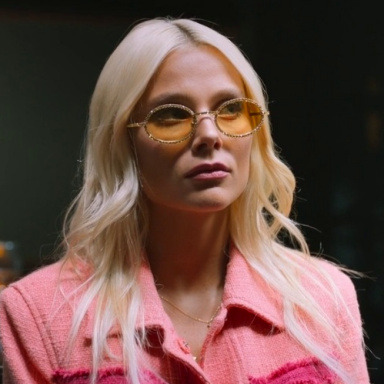
like or reblog if you save. ♡
#icons#icons request#elite#netflix elite#elite season 7#elite s7#elite icons#valentina zenere#isadora artinan#anitta#mirela balic#nadia al saidi#andre lamoglia#ivan carvalho#netflix#elite spoilers
47 notes
·
View notes
Text
Catuai & Yellow Bourbon: Exploring Brazil’s Coffee Varieties
Brazil dominates the coffee industry. It’s responsible for roughly a third of the coffee we drink. One single state in Brazil, Minas Gerais, produces more coffee than any other country in the world. It’s also the world’s biggest consumer of coffee.
And this coffee giant is also strongly associated with certain coffee varieties, some of which are rarely found in other origins. Its genetic research has also influenced the development of varieties in other countries.
From the high-yielding Mundo Novo to the sweet and delicious Pacamara, Brazil has played a pivotal role in the development of several cultivars. Let’s explore how this happened and some of the country’s most important varieties.
You might also like: 5 Things You Should Know About Brazilian Specialty Coffee
Natural processed coffee drying at a farm in the South of Minas Gerais, Brazil. Credit: Ivan Laranjeira Petrich
Why Are Coffee Varieties Important?
There is now a vast array of coffee varieties to choose from. But, what are they? Why are they important?
Coffee is a food, and as with all foods, there are different varieties. For example, when you go to the supermarket to pick up some apples, you might find Granny Smith, Pink Lady, or maybe Golden Delicious. They’re all apples, but each variety differs from taste to texture and will grow in different ways.
Coffee varieties are important for a number of different reasons. As a consumer, varieties will produce different cup profiles. If a roastery is after a high-quality, floral coffee, they may opt for a Geisha. If they’re after a coffee with high acidity, they may choose a Catuai. Years of development in coffee varieties mean that there are now a lot of options to choose from, and therefore a lot of different cup profiles too.
For coffee producers, picking coffee varieties is integral to farm management and can determine the success of a harvest. Firstly, varieties will produce different quality coffee in varying levels of yield, which can directly affect the income of a farmer. Secondly, varieties will flourish in certain environments, so it’s important to coffee production that producers select the best crop for their farm. Varieties also have different susceptibility to pests and diseases, which will play an important role in selecting a coffee variety, especially as these issues can devastate harvests.
The development of these varieties has provided a wider range of options for both producers and consumers, which for both parties, has very helpful benefits.
Overview of Fazenda Pedra Preta in Minas Gerais, Brazil. Credit: Fazenda Pedra Preta.
Origins of The First Brazilian Coffee Varieties
Coffee is not a native plant to Brazil. The first recorded history of Arabica in Brazil dates back to 1727 when Francisco M. Palheta was believed to have brought plants and seeds to the north of Brazil from neighboring French Guiana.
This was the Typica variety, now known for its low productivity and susceptibility to pests and diseases. Despite this, the genetics of this variety is the basis of most Arabica coffee cultivars around the world today. Typica is also still widely cultivated in countries such as Peru, the Dominican Republic, and Jamaica.
The coffee landed in 1727, and there would be a long wait until any kind of genetic improvement could be made to the Typica variety in Brazil.
The creation of the Agronomic Institute of Campinas (IAC) in 1874 was the first step in the development of Brazilian coffee varieties, founded to support the research of coffee crops. In 1928, following significant development in genetics research in the late 19th and early 20th Century, the genetics department was created at the IAC. This team included pioneers of coffee plant study, Carlos A. Krug and Alcides de Carvalho, who were responsible for many new coffee variety cultivations in Brazil and worldwide.
You might also like: Geisha, Bourbon, & More: How to Identify 6 Coffee Varieties
A cupping table at a farm in the Mountains of Espirito Santo, Brazil. Credit: Ivan Laranjeira Petrich
Formation of The Brazilian Genetic Bank
The next step in coffee variety development came in 1932. Professor C. A Krug from the IAC was sent to Cornell University in the USA to specialize in genetics, cytogenetics, and improvements of plants. That same year, he returned to the IAC and set up the genetic bank, with a focus on the preservation, genetics, and breeding of different plants and species, including coffee.
The first collections at the genetic bank were variations or mutations of Arabica found in Brazilian territory. Over the coming decades, the bank received more coffee type samples. These included plants and species collected by the agronomist Edmundo N. de Andrade during his trip to Indonesia and a coffee collection from the 1964‒65 Food and Agriculture Organization (FAO) expedition to Ethiopia.
The genetic bank is an incredibly valuable resource and its wide range of plants and species is a fundamental resource for the development of new coffee varieties which are more adapted to future conditions and consumption trends.
View from a coffee farm in the South of Minas Gerais, Brazil. Credit: Ivan Laranjeira Petrich
Different Arabica Varieties Developed in Brazil
Brazil has led the development of a long list of coffee varieties. We’ll focus on some of the most iconic varieties that you might have seen around.
Maragogipe
The Maragogipe variety was discovered in the city of Maragogipe, Bahia, in 1870, and developed as a result of a natural mutation of the Typica variety.
It’s distinguishable by its large fruits, as well as its high quality. This attracted the attention of coffee buyers in Rio de Janeiro and Europe. And in 1883, the Ministry of Agriculture purchased 500 kg of seeds and donated them and farming materials to Brazilian farmers. Despite this, its popularity didn’t last due to its low productivity, which proved a problem on commodity farms.
Although the variety is no longer as relevant in Brazil as it used to be, it played an important role in the development of the Pacamara variety in 1958 by the Salvadoran Institute of Coffee Research (ISIC).
Coffee trees at a farm in Brazil. Credit: Quintas de Guimarães
Yellow Bourbon
Sweet, delicate-bodied, and complex, Yellow Bourbon has a lot to offer. This variety can be traced back to Pederneiras, São Paulo in 1930. There are two theories behind the origin of Yellow Bourbon. The first is that the variety had come from the natural breeding of Botucatu’s Yellow and Red Bourbon, and the second that the plant could be a natural mutation of Red Bourbon.
It was one of the first to be recognized for its outstanding cup, in addition to having significantly higher production than other varieties. It quickly became popular in Brazil, with production tripling from 1949 to 1951. However, there was a decline in Yellow Bourbon in the years that followed. This was due to more productive and less susceptible coffee varieties being released at that time.
In recent years, the demand for specialty coffee has brought complex, high-quality coffee into fashion. In 2005, the IAC picked up studies of Yellow Bourbon again, with research into strains with higher yields. In the 2017 Cup of Excellence Brazil, samples of Yellow Bourbon were cupped at 92.33 and sold for US $126.00/lb at auction, 100 times the C price on that date.
Ripe yellow cherries and unripe cherries at a farm in Minas Gerais, Brazil. Credit: Nicholas Yamada
Caturra
This variety has bright acidity and is commonly grown throughout Colombia, Costa Rica, and Nicaragua. It’s believed to have been discovered on a plantation in Lessa, a village in Minas Gerais between 1915 and 1918. Research suggests that Caturra is a natural mutation of the Bourbon variety.
The IAC started making selections of Caturra in 1937. What made Caturra an interesting variety and caught the attention of researchers was its small size, which is called dwarfism. This explains the name Caturra, which means “small” in the indigenous language Guarani.
Small plants are often seen as an advantage; they allow farmers to increase the number of plants in the same space, compared to larger plants. Because of this, it has been used in the development of other coffee varieties as well as playing a role in the high-density coffee cultivation.
Mundo Novo
A sweet cup with low acidity, this coffee variety is still widely grown in Brazil. The name Mundo Novo translates to “New World” in Portuguese.
The history of Mundo Novo can be traced back to 1896 when Typica seeds from Indonesia were planted in Jaú, São Paulo. It is a result of natural breeding between the Typica variety and Bourbon variety found in Jaú, and is characterized by its large plant size. It wasn’t until 1943 when the IAC was informed of a plantation near Mundo Novo, present-day Urupês, that had both good yields with low susceptibility to pests and diseases. They discovered that the plants had grown from seeds that were collected from a single tree on the edge of a narrow road in the city of Mineiros do Tietê.
After years of studying and breeding, Mundo Novo was released in 1952. Even today, it is still recognized for its high yields and good cup quality. Although not resistant to pests and diseases, this variety is still widely cultivated in Brazil due to its high production.
Catuai
This hybrid variety makes a sweet cup with bright acidity. Its name comes from the indigenous language of Guarani translating to “very good.”
Its origins can be traced back to 1948 when the IAC began developing a high-yield variety. The Catuai group is a result of artificial breeding of Caturra, for its short qualities, and Mundo Novo, for its high yields. It benefits from a smaller size, meaning more plants can be sown in the same space, and high productivity.
After years of research, the Red and Yellow Catuai group varieties were released in 1972. Due to their productivity and good cup quality, they became extremely popular. Catuai remains popular in Brazil, as well as being grown in countries such as Honduras, Costa Rica, Guatemala, Hawaii, Cuba, and many others.
Researching Rust-Resistant Varieties
Coffee leaf rust is a parasitic fungus that infects coffee plants, capable of destroying entire harvests. In the late 19th Century, it wiped out coffee plants in Sri Lanka, putting an end to its coffee industry. More recently, between 2012 and 2014, it caused over US $1billion of damage in Central America.
Before leaf rust reached Brazil in the 1970s, Alcides de Carvalho had already begun studies into coffee leaf rust resistance. Using hybridization techniques, he performed one of the first examples of artificial breeding of Robusta, known for its resistance, and Arabica. Although Carvalho was working on the development of this variety in the late 1960s, it wasn’t officially released until 1992, when it was named Icatu.
Icatu is now known to be highly productive and to have low susceptibility to pests and diseases, leading it to be commonly cultivated in Brazil. The name comes from the indigenous Tupi-Guarani language, which translates to “bonanza.”
The Timor Hybrid variety was discovered in the 1920s on the island of Timor in Southeast Asia. It was the result of the natural breeding between a Robusta plant and an Arabica plant, resulting in a natural resistance to coffee leaf rust, which is not found in other naturally occurring Arabicas.
Since then, many Brazilian research institutions have used the Timor Hybrid variety to develop more pest and disease-resistant varieties. This includes IAC 125 RN which has a resistance to coffee rust and roundworms, and Siriema AS1, a variety resistant to leaf rust and mining leaf bug.
Coffee leaves infected with coffee leaf rust at a farm in Brazil. Credit: Nossa Familia Coffee
Brazil has a substantial influence on the coffee industry. This is not solely due to its vast production of coffee but as a prominent figure in the development of coffee varieties which are much loved by consumers and valuable to farmers.
Its dedication to genetics and the development of coffee varieties is admirable. Without it, we wouldn’t have the high-scoring Yellow Bourbon, the highly productive Caturra, and many more.
Enjoyed this? Check out The Arara Variety: What Is It & Why Is It Popular in Brazil?
Written by Jonas Leme Ferraresso. Featured photo caption: Coffee plantation in the South of Minas Gerais, Brazil. Featured photo credit: Ivan Laranjeira Petrich
Perfect Daily Grind
Want to read more articles like this? Sign up for our newsletter!
The post Catuai & Yellow Bourbon: Exploring Brazil’s Coffee Varieties appeared first on Perfect Daily Grind.
Catuai & Yellow Bourbon: Exploring Brazil’s Coffee Varieties published first on https://espressoexpertweb.weebly.com/
0 notes
Text
Patrick & Iván




like or reblog if you use or save.
#elite icons#elite 6#serie tv#serie icons#patrick blanco#patrick blanco commerford#patrick blanco icons#Manu rios#manu rios icons#ivan Carvalho#ivan Carvalho icons#André lamoglia
136 notes
·
View notes
Text
La Liga: Why Real Madrid and Barca changes could pave way for Atletico Madrid
La Liga: Why Real Madrid and Barca changes could pave way for Atletico Madrid
La Liga: Why Real Madrid and Barca changes could pave way for Atletico Madrid
Gareth Bale is likely to be a more central figure at Real Madrid this season, Antoine Griezmann committed his future to Atletico and Lionel Messi has been named Barcelona captain
The new La Liga season gets under way this weekend amid plenty of intrigue, especially for Real Madrid – as the three-in-a-row European champions begin life without iconic duo Cristiano Ronaldo and Zinedine Zidane.
Real are by no means the only team going through a period of change, however, with similar – although less dramatic – transitions being experienced by their biggest rivals, Atletico Madrid and domestic champions Barcelona.
The level of uncertainty surrounding the big three has raised excitement levels about the new campaign, and the least heralded club of the trio are now most strongly positioned as the season dawns.
And Atletico struck an early-season blow against one of their major rivals with a 4-2 win over Real in Wednesday’s Uefa Super Cup.
What next for Real without Ronaldo and Zidane?
Overseeing the new era at Real is coach Julen Lopetegui, who was controversially fired by Spain two days before the World Cup after agreeing to move to the Bernabeu without – according to the Spanish Football Federation – notifying his then-employers of his intentions.
Lopetegui’s first task is to figure out how to reshape Real’s attacking play without Ronaldo, and the most notable aspect of the summer has been the club’s failure to sign a direct replacement.
There is still time, with the Spanish transfer window open until the end of the month, and it is possible that Real will make a move for Mauro Icardi from Inter Milan, Rodrigo from Valencia or, although it currently seems unlikely, Neymar or Kylian Mbappe from Paris St-Germain. Or even Eden Hazard from Chelsea.
Who will be Real Madrid’s next galactico?
For now, though, it appears that Lopetegui is ready to persist with Karim Benzema at the head of his favoured 4-3-3 formation, with Marco Asensio and Gareth Bale benefiting from Ronaldo’s departure to become starters in the wide attacking positions.
One key player for Real this season will surely be Isco, whose personal history with Lopetegui dates back to winning the European Under-21 title together in 2013. The coach has remained a huge admirer of the midfield conjuror ever since, and this season should finally give Isco the opportunity to take centre stage under the guidance of a boss who trusts him completely.
Unless a new striker is signed, the main selection decision for Lopetegui is whether to stick with Keylor Navas in goal or replace him with newly signed Thibaut Courtois, although the option of job-sharing – one for La Liga, the other for cup competitions – has also been touted.
However, rather than personnel or playing systems, the biggest doubt hanging over Real is Lopetegui’s lack of top-level club management experience, aside from a disappointing stint in charge of Porto.
Predecessor Zidane’s only prior managerial experience was with Real’s B team. But Zidane was a Real legend and Lopetegui has no Ronaldo to bail him out, so it remains to be seen how he will cope – especially as many fans and members of the media appear ready to turn against him following his perceived “desertion” of the national team before the World Cup.
Whatever happens, his first season in charge won’t be dull.
Could reinforced Atletico take advantage of rivals’ changes?
Diego Godin was a reported target for Manchester United but is staying with Atletico Madrid this season
Real face a serious challenge from city rivals Atletico, a point emphasised by the Rojiblancos’ extra-time victory in Tallinn on Wednesday.
It has been an outstanding summer in the transfer market for Diego Simeone, who can now call upon arguably a far stronger squad than the side that won the title back in 2014.
Most significantly, Atletico have succeeded in keeping hold of three key players, with Antoine Griezmann turning down Barcelona, Diego Godin reportedly rejecting Manchester United and outstanding goalkeeper Jan Oblak dismissing interest from an array of suitors.
That has never really happened before to Atletico, who were accustomed to losing their biggest talents to more powerful rivals, and the fact that the Rojiblancos can turn away such major offers suggests a turning point has been reached in terms of their status within the elite.
They have also strengthened, with the addition of defensive midfielder Rodri looking a particularly good piece of business – the 22-year-old is on the fringes of the Spain squad after an outstanding season with Villarreal, and is widely regarded as the eventual heir to Sergio Busquets in the national team.
Atletico should also be more dangerous going forward following the acquisition of Thomas Lemar and Gelson Martins to provide more ammunition for Griezmann and Diego Costa, while Croatian striker Nikola Kalinic has been added for another muscular option.
With a reinforced attack, a versatile midfield, a rock-solid defence and Simeone’s know-how, it appears Atletico have everything in place to challenge for silverware – especially considering the enticing prospect of the Champions League final being staged in their own Wanda Metropolitano stadium.
A change of approach for Barca
Barcelona’s loss to Roma in the last 16 in 2017-18 means they have reached just one Champions League final in seven years
Mention of the Champions League final inevitably turns attention to reigning league champions Barcelona, who are focusing more of their efforts than ever on regaining European supremacy.
An embarrassing exit at Roma in April, when they squandered a 4-1 first leg lead, was the third successive quarter-final elimination for Lionel Messi and co, and for a club with such lofty aspirations that just isn’t good enough – especially with Real enjoying so much success on the continental stage.
Barca’s problem in the past couple of seasons has been a lack of squad depth, which has led to key players being selected week after week and becoming jaded by the time of the knockout rounds.
Stats prove the point: six Barca players made at least 30 league starts last season (Marc-Andre ter Stegen, Jordi Alba, Sergio Busquets, Ivan Rakitic, Luis Suarez and Messi), whereas only one Real player did so (Casemiro). The conclusion at the Nou Camp is that to challenge more effectively in Europe, manager Ernesto Valverde needs to rotate his starting XI more often.
To achieve that aim, Barca have been busy in the transfer market. The midfield has been particularly refreshed, partly necessitated by the departures of Andres Iniesta and Paulinho, and Valverde will be expected to regularly use new signings Malcom, Arthur and Arturo Vidal rather than leaving them on the bench and constantly turning to Rakitic and Busquets.
And, of course, if the Catalan club succeed in their optimistic ambition of luring Paul Pogba away from Manchester United, yet another new dimension will be added to their midfield.
The attack will be powered by new captain Messi, his favourite ally Luis Suarez and Philippe Coutinho, but there is also a sense that Ousmane Dembele is ready to enjoy a breakout season after an injury-disrupted campaign in 2017-18.
Dembele’s electrifying talent is not in doubt, but last season he struggled within the team framework built by Valverde. The new campaign has shown promise, though, with the young Frenchman producing a superb strike to secure the Spanish Super Cup against Sevilla on Sunday.
If that is a sign of things to come, Barca should be tough to beat.
Forget Real and Barca – Betis are the great entertainers
Away from the title contenders, another team well worth watching this season are Real Betis. After a fallow few years, the Seville club are emerging as a force under coach Quique Setien, whose purist principles made his team a joy to watch during his first season in charge.
3-5, 5-3, 0-5, 3-2, 4-4, 3-6… they were just some of the scorelines in Betis games last season, but there was also plenty of substance to go with the entertainment as Setien took his team to a sixth-place finish – their highest since 2005.
The summer arrivals of powerhouse Portuguese midfielder William Carvalho and dynamic Japanese winger Takashi Inui have sparked expectations that Betis could reach even greater heights, especially if rising star Loren Moron can continue the progress that saw him light up the league after being introduced to the team’s attack in February.
Across the city, Sevilla face an intriguing campaign under new manager Pablo Machin, who forged his reputation by leading minnows Girona into the top flight with an exhilarating brand of football, while Villarreal will also hope to mount a top-four challenge after reinvigorating their attack with the re-signing of Gerard Moreno from Espanyol.
Also keep an eye on Valencia, who emerged from a dark period with a vibrant season under demanding coach Marcelino last time around, and will be looking to make further progress following several eye-catching summer signings, including a loan move for Chelsea striker Michy Batshuayi.
With the changes at the top three and the potential for improvement of several teams below them, it all adds up to a fascinating season in La Liga – and perhaps the most open and competitive in many years.
BBC Sport – Football ultras_FC_Barcelona
ultras FC Barcelona - https://ultrasfcb.com/football/10562/
#Barcelona
0 notes
Text



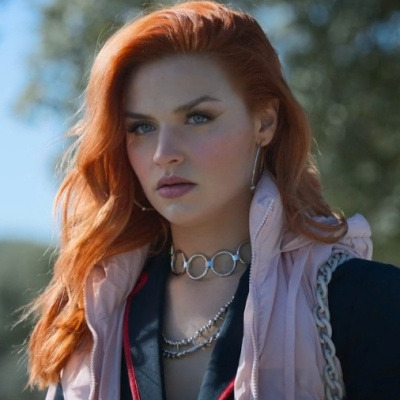



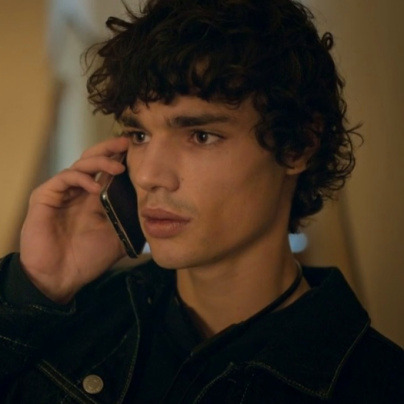

like or reblog if you save. ♡
#icons#icons request#elite season 7#elite s7#elite#netflix elite#andre lamoglia#ivan carvalho#nadia al saidi#mirela balic#fernando lindez#netflix#netflix tv shows#elite cast#elite spoilers
34 notes
·
View notes
Text






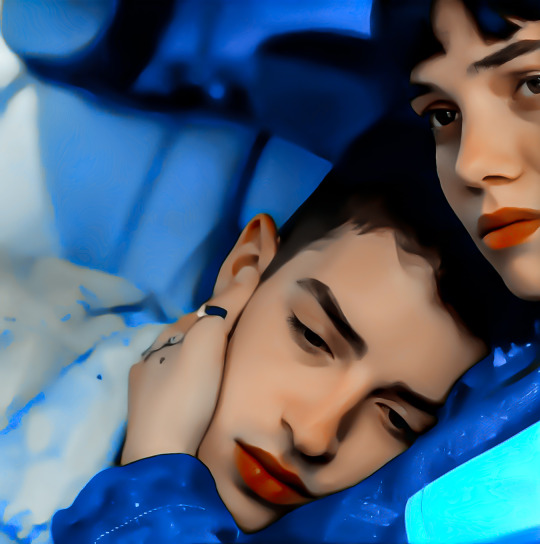


# 𝘇𝗭𝘇 新的 🍇° ꕤᩨᩝ ぷ⋕ . . 𝕟̫𝖾̈𝗐͢ ᖘᩚ𝗼ᩚ̲𝘀𝕥̫. ★ // ( ˘ ³˘)♥︎ ★ ∘៳ 🕸️🐛 l!ke 𖦹r rebl𖦹g #? ᨓ .. . 𓍢📢 ֶָ֪﹪. [ ℭ ]𝗿𝗲𝗱¡𝘁𝚂 𝗆𝕖 :: ✩* .💉 ⋆
#cybercolors#bwbejacksonpsd#celebrities#icons with psd#soft icons#pastel moodboard#moodboard#colorful moodboard#trufflezitas#messy layouts#susumo#elite#elite icons#elite s6#icons elite#rocio elite#ivan carvalho#patrick blanco#nico elite#isadora artinan#isadora artiñán#didac elite#mencia blanco#cruz carvalho#elite metadinhas#elite matching icons#isadora artinan icons#mencia blanco icons#patrick blanco icons#elite netflix
75 notes
·
View notes
Text


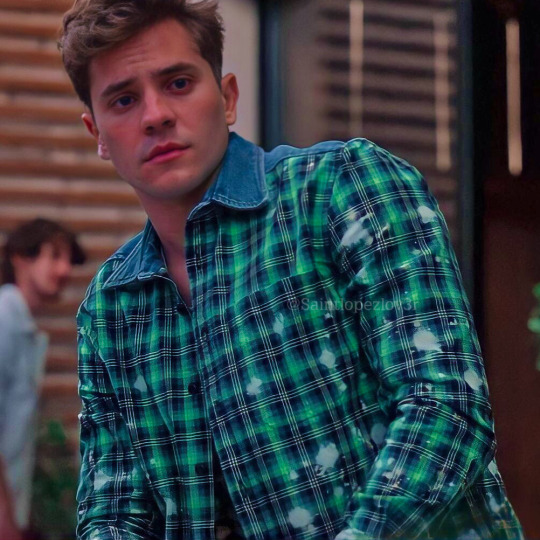

Iván Carvalho🇧🇷
Elite
27 notes
·
View notes